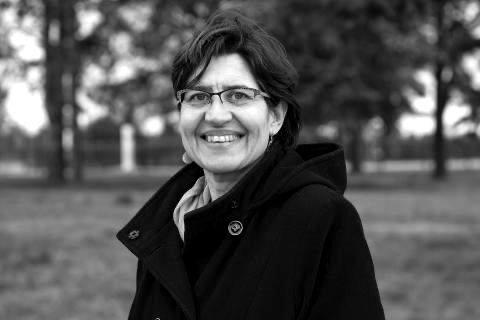Environment: Research in the face of climate change - Conversation with Valérie Masson-Delmotte (Paris-Saclay University)
- Business Science Institute

- 10. Sept. 2025
- 4 Min. Lesezeit
Aktualisiert: 11. Sept. 2025

Valérie Masson-Delmotte
Research Director, CEA Paris-Saclay
Co-Chair of the Intergovernmental Panel on Climate Change (IPCC)

Jean-Philippe Denis
Professor
Paris-Saclay University
RITM, IQSOG
*Director of the Executive DBA Paris-Saclay / Business Science Institute
Understanding climate change in order to take action: what science tells us
Reports from the IPCC (Intergovernmental Panel on Climate Change) regularly make headlines as the visible signs of climate change intensify. Behind these voluminous documents, the result of several years of collective work, are researchers whose commitment extends beyond the academic sphere. Among them is Valérie Masson-Delmotte, a climatologist at the CEA (Paris-Saclay University) and co-chair of IPCC Working Group I, who here provides the scientific keys to a rigorous understanding of climate change, its causes, and its implications for action.
In these interviews, she emphasizes a fundamental point: climate change is no longer a future phenomenon, but a present reality, observable in all regions of the world. Today, science allows us to understand its mechanisms, characterize its effects, and model its possible trajectories. However, this knowledge must be put to practical use, not only by public decision-makers, but also by businesses, citizens, and educational institutions.
Observing a changing world
The IPCC's Sixth Assessment Report (AR6), published in 2021, marks a decisive step forward in consolidating climate knowledge. It draws on more than 14,000 scientific publications, involves hundreds of researchers, and aims to produce a readable and reliable synthesis for all stakeholders. The dissemination effort takes several forms: a full report, summaries for decision-makers, interactive tools such as the regional climate atlas, etc. It is no longer just a matter of documenting, but of making this data accessible and useful.
The findings are unequivocal. Global warming is now around 1.1°C compared to the period 1850–1900. This warming is accompanied by an acceleration in sea level rise, widespread glacier melt, an increase in extreme weather events (heat waves, torrential rains, droughts), and profound changes in terrestrial and marine ecosystems. Some of these changes are unprecedented in the last two thousand years.
Identifying human causes
One of the major contributions of this research cycle is the increased ability to identify the role of human factors in climate change. The results are clear: all of the warming observed over the past century is attributable to human activities. Natural variability (volcanism, solar activity, ocean cycles, etc.) cannot explain the significant trends observed.
The first factor is the increase in greenhouse gases, primarily carbon dioxide (CO₂), produced mainly by the combustion of fossil fuels. Some of this CO₂ is absorbed by the oceans and vegetation, but around 44% remains in the atmosphere, where it will stay for centuries. Methane (CH₄), another very powerful greenhouse gas, is watching its emissions increase sharply in recent years, particularly as a result of intensive livestock farming and leaks linked to the exploitation of fossil fuels. These emissions have cumulative effects and reinforce the disruptions already underway.
Valérie Masson-Delmotte also points out that certain visible effects (such as extreme heat waves and torrential rains) have become more likely and more intense precisely because of this human influence. The “attribution” methods developed by climatologists now make it possible to quantify this influence with great precision.
Thinking in scenarios, acting with knowledge
The IPCC report does not merely document the current situation. It also explores five major scenarios for future developments, based on greenhouse gas emission projections. These scenarios cover a wide range of trajectories, from a drastic reduction in emissions to a very sharp increase. They are used to test climate models and anticipate the expected consequences at different time scales (2030, 2050, 2100).
Each scenario is accompanied by a risk analysis: what impact will there be on ice caps, sea levels, and the frequency and intensity of extreme events? Which geographical areas will be most affected? Which economic sectors will need to adapt their infrastructure or business models? The report now provides fact sheets by region, but also, increasingly, by sector (insurance, agriculture, construction, etc.), in order to enable concrete appropriation of the data.
In this context, the question of how to share the effort between rich and emerging countries cannot be avoided. While some countries have begun to decouple economic growth from emissions, others—such as India—are still watching their emissions rise, in a context of human development where basic needs are not being met. The debate cannot therefore be solely technical: it is also ethical, social, and geopolitical.
The role of scientists in relation to decision-makers
Valérie Masson-Delmotte repeatedly returns to her attachment to the role of scientists in society. It is not, she says, a question of “militancy,” but of assuming responsibility: that of providing sincere, rigorous, accessible knowledge in order to inform the choices to be made. The IPCC report does not provide ready-made solutions. It offers a foundation of data, a framework for understanding, and tools for anticipation.
While it is not up to scientists to decide on public policy or energy choices, it is their responsibility to highlight the state of the world. The link between science and decision-making is neither immediate nor automatic, but it is vital. “In France, we are already in a situation where decarbonizing electricity will not be enough. We need to take action on transportation, buildings, agriculture, and more,” she points out. It is this strategic clarity that climate science offers.






